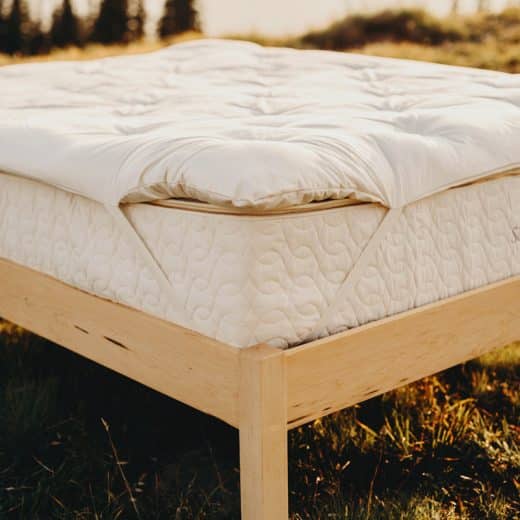
If you’re allergic to latex, you’re likely already aware of it. Never heard of such a thing? This overview may help you understand latex allergy better, and the Savvy Rest organic mattress, too.
How Common are Latex Allergies?
According to the American Academy of Allergy, Asthma and Immunology, latex allergy affects less than 1% of the general population. The incidence is higher for health care workers—between 5% and 15%. That is because many people in health care fields wear latex gloves (a blend of synthetic and natural rubber) in the course of their jobs, for many, many hours over the years. Touching latex doesn’t trigger an allergy, but repeatedly breathing in the microscopic powder used to line the gloves can. Workers inhale tiny amounts of the powder, released in bursts when the gloves are “snapped” on and off. The powder contains microscopic rubber proteins, and with repeated inhalations over a long period of time, some users eventually develop an allergy. Once a person has become sensitized, they may then react to skin contact as well.
Learn more about our latex-free mattresses and bedding
Can I Sleep on a Latex Mattress?
If you are mildly allergic and only experience minor skin irritations, you may still be able to use a natural latex mattress, but you should avoid handling the “naked” latex. If possible, have someone else assemble the mattress for you. Once the casing is zipped closed, the latex is covered with layers of fabric and wool batting. On top of that, you’d normally add an organic mattress pad and sheets, so you’re well-shielded.
A more serious but rare reaction is a severe, systemic immune response to natural latex. In the most severe cases, this could result in anaphylactic shock, such as a peanut-allergic person can have on ingesting a tiny bit of peanut. If someone describes severe latex sensitivity or allergy issues (throat closing, difficulty breathing, swellings on the skin) in response to latex, we recommend not buying any latex mattress, pillow, or mattress topper. If someone has a dangerous allergy, s/he should not sleep on latex, period.
A wool-filled mattress, topper, or pillow may be a safe alternative.
If you still feel uncertainty about latex, please consult your allergist for advice before buying a Savvy Rest—or any natural latex product.

You might also enjoy…

What’s a “Hypoallergenic Mattress”?
The term hypoallergenic is not regulated. You might find it in various product descriptions around the web, but such descriptions typically aren’t substantiated with medical science or backed by trusted certifications. Here’s what you should know.


